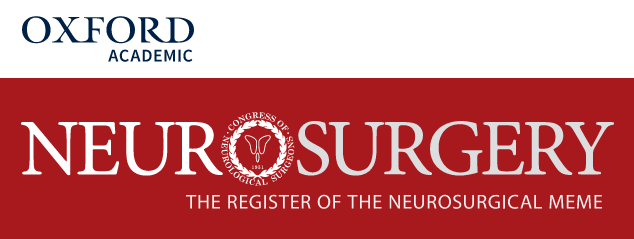 “Marijuana is increasingly utilized for the treatment of multiple medical problems, including back pain, in the United States. Although there is strong preclinical evidence supporting the promise of cannabinoids in the treatment of back pain, there is a paucity of clinical data supporting their use in clinical practice. Opioids are an important medication for the treatment of acute and chronic back pain, but utilization of opioid-based regimens have likely contributed to the growing opioid epidemic. The significant risk of morbidity, mortality, and dependence secondary to opioid medications have increased the interest in nonopioid medications, including cannabinoid-based pain regimens, in treating back pain. This review will provide an overview on the pharmacology, drug delivery methods, clinical evidence, and safety considerations critical to understanding the potential role of cannabinoids in the treatment of back pain.”
“Marijuana is increasingly utilized for the treatment of multiple medical problems, including back pain, in the United States. Although there is strong preclinical evidence supporting the promise of cannabinoids in the treatment of back pain, there is a paucity of clinical data supporting their use in clinical practice. Opioids are an important medication for the treatment of acute and chronic back pain, but utilization of opioid-based regimens have likely contributed to the growing opioid epidemic. The significant risk of morbidity, mortality, and dependence secondary to opioid medications have increased the interest in nonopioid medications, including cannabinoid-based pain regimens, in treating back pain. This review will provide an overview on the pharmacology, drug delivery methods, clinical evidence, and safety considerations critical to understanding the potential role of cannabinoids in the treatment of back pain.”
https://www.ncbi.nlm.nih.gov/pubmed/32097466
https://academic.oup.com/neurosurgery/advance-article/doi/10.1093/neuros/nyz573/5758016

 “Neuropathic pain conditions including neuropathic orofacial pain (NOP) are difficult to treat. Contemporary therapeutic agents for neuropathic pain are often ineffective in relieving pain and are associated with various adverse effects. Finding new options for treating neuropathic pain is a major priority in pain-related research.
“Neuropathic pain conditions including neuropathic orofacial pain (NOP) are difficult to treat. Contemporary therapeutic agents for neuropathic pain are often ineffective in relieving pain and are associated with various adverse effects. Finding new options for treating neuropathic pain is a major priority in pain-related research. “Burning mouth syndrome (BMS) is a neuropathic pain disorder associated with a burning sensation on oral mucosal surfaces with frequently reported xerostomia, dysgeusia and tingling or paraesthetic sensations. However, patients present no clinically evident causative lesions. The poor classification of the disorder has resulted in a diagnostic challenge, particularly for the clinician/dentist evaluating these individuals. Major research developments have been made in the BMS field in recent years to address this concern, principally in terms of the pathophysiological mechanisms underlying the disorder, in addition to therapeutic advancements. For the purpose of this review, an update on the pathophysiological mechanisms will be discussed from a neuropathic, immunological, hormonal and psychological perspective. This review will also focus on the many therapeutic strategies that have been explored for BMS, including antidepressants/antipsychotics, nonsteroidal anti-inflammatories, hormone replacement therapies, phytotherapeutic compounds and non-pharmacological interventions, overall highlighting the lack of controlled clinical studies to support the effectiveness of such therapeutic avenues. Particular focus is given to the
“Burning mouth syndrome (BMS) is a neuropathic pain disorder associated with a burning sensation on oral mucosal surfaces with frequently reported xerostomia, dysgeusia and tingling or paraesthetic sensations. However, patients present no clinically evident causative lesions. The poor classification of the disorder has resulted in a diagnostic challenge, particularly for the clinician/dentist evaluating these individuals. Major research developments have been made in the BMS field in recent years to address this concern, principally in terms of the pathophysiological mechanisms underlying the disorder, in addition to therapeutic advancements. For the purpose of this review, an update on the pathophysiological mechanisms will be discussed from a neuropathic, immunological, hormonal and psychological perspective. This review will also focus on the many therapeutic strategies that have been explored for BMS, including antidepressants/antipsychotics, nonsteroidal anti-inflammatories, hormone replacement therapies, phytotherapeutic compounds and non-pharmacological interventions, overall highlighting the lack of controlled clinical studies to support the effectiveness of such therapeutic avenues. Particular focus is given to the  “To determine whether differences in disability status, spasticity severity, and spasticity duration at treatment start in patients with resistant multiple sclerosis (MS) spasticity might influence response to add-on tetrahydrocannabinol:
“To determine whether differences in disability status, spasticity severity, and spasticity duration at treatment start in patients with resistant multiple sclerosis (MS) spasticity might influence response to add-on tetrahydrocannabinol: “Metastatic breast cancer is prevalent worldwide, and one of the most common sites of metastasis are long bones. Of patients with disease, the major symptom is pain, yet current medications fail to adequately result in analgesic efficacy and present major undesirable adverse effects.
“Metastatic breast cancer is prevalent worldwide, and one of the most common sites of metastasis are long bones. Of patients with disease, the major symptom is pain, yet current medications fail to adequately result in analgesic efficacy and present major undesirable adverse effects. “The legalisation of
“The legalisation of  “Cannabinoids are increasingly-used substances in the treatment of chronic pain, some neuropsychiatric disorders and more recently, skin disorders with an inflammatory component.
“Cannabinoids are increasingly-used substances in the treatment of chronic pain, some neuropsychiatric disorders and more recently, skin disorders with an inflammatory component. “Over the past decade the phenomenon of
“Over the past decade the phenomenon of